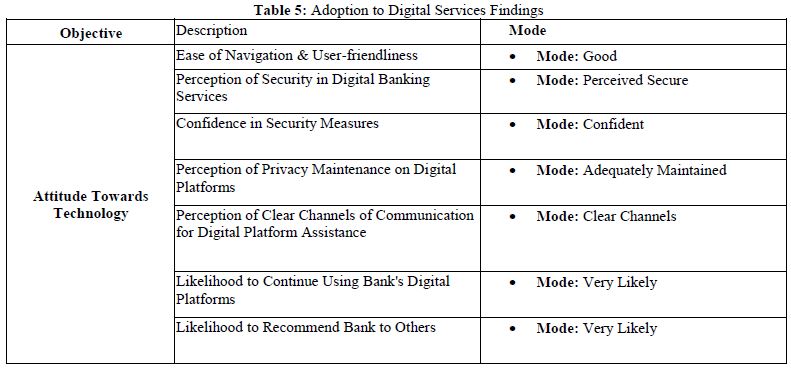The Effect of Digitalization on Customer Satisfaction-A Case of a Bank in Zambia
DOI:
https://doi.org/10.5281/zenodo.10682234Keywords:
digitization, customer satisfaction, banking sector, digital platformsAbstract
This study examines how digitization affects customer satisfaction in a Bank in Zambia. With the financial industry rapidly changing due to technology, digital banking services have become crucial. Zambia's banking sector has seen significant digitization in recent years, including mobile banking, online transactions, and ATM access. Therefore, it is essential for banks and policymakers to understand the impact of digitization on customer satisfaction. The aim of the study was to investigate the effect digitalization has on customer satisfaction at a local bank in Zambia. A survey strategy using structured questionnaires was employed to gather data. The findings highlight the importance of factors such as convenience, accessibility, speed, customer alerts for transactions, and real-time feedback in determining customer satisfaction in a digitized banking environment. The results of this study have valuable implications for both the bank and policymakers. Understanding how digitization influences customer satisfaction provides insights that drive strategic decisions to enhance customer experiences and loyalty in the digital era. The significance of digitization in the banking sector its ability to transform customer satisfaction is emphasized in the conclusion. Through an examination of the different aspects of this correlation, it provides insight into the obstacles and prospects that digitization offers to banks. These findings are crucial for remaining competitive and guaranteeing customer satisfaction in a constantly evolving and technology-driven industry, as digital banking continues to progress.
Downloads
References
Balkan, B. (2021). Impacts of digitalization on banks and banking. s.l.: ResearchGate.
Bank of Zambia. (2021). Bank of Zambia. Available at: https://www..zm/payment-systems-statistics.htm.
[Accessed 18 November 2021].
BoZ. (2018). National payment system directives on electronic money issuance. Lusaka: Bank of Zambia.
Brusnahan, P. (2019). Digital banking in Europe is fully embedded in consumer's lives.
FSD. (2013). Effects of mobile money on the payment systems of Ghana. Accra: Financial Sector Deepening.
Gartner. (2016). Digitization. IT Glosary.
Harb A., Thoumy M., & Yazbeck M. (2022). Customer satisfaction with digital banking channels in times of Uncertainty. Banks and Bank Systems, pp. 27-37.
Hanafizadeh, P., Keating, B. W., & Khedmatgozar, H. R. (2014). A systematic review of internet banking adoption. Telematics and Informatics, 31(3), 492-510.
Kifle, E. (2021). Determinants of internet banking adoption in Ethiopia, Addis Ababa: Addis Ababa University.
Kingu, A. J. (2021). Impact of digital banking on bank users: A case study of Dar Es Salaam. Dar Es Salaam: College of Business Education (CBE).
Lasmini, R. S., Budiarti, A. P., Tasman, A., & Susan, F. A. (2019). The relationship between e-banking and financial performance of go public bank in Indonesia. s.l., Atlantis Press.
Muluka, K. O. H. (2015). Influence of digital banking on customer satisfaction: A case of national bank of Kenya Bungoma County. s.l.: University of Nairobi.
Napoletano, E., & Foreman, D. (2021). What is digital banking. Forbes.
Nkomesha, U. (2020). Govt questions stancharts move to shut 8 branches. Diggers News. 22 November.
Ugwuanyi, C. C., Uduji, J. I., & Oraedu, C. (2021). Customer expereince with self-service technologies in the banking sector: Evidence from Nigeria. International Journal of Business and Systems Research.

Downloads
Published
How to Cite
Issue
Section
ARK
License
Copyright (c) 2024 Changu Chibwe, Bupe Getrude Mwanza

This work is licensed under a Creative Commons Attribution 4.0 International License.
Research Articles in 'Social Science Journal for Advanced Research' are Open Access articles published under the Creative Commons CC BY License Creative Commons Attribution 4.0 International License http://creativecommons.org/licenses/by/4.0/. This license allows you to share – copy and redistribute the material in any medium or format. Adapt – remix, transform, and build upon the material for any purpose, even commercially.










